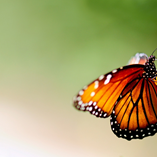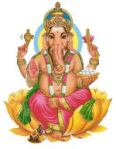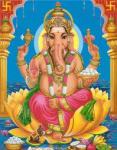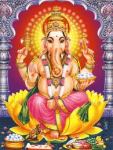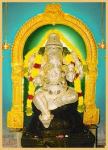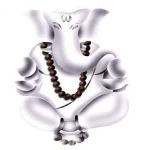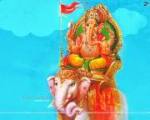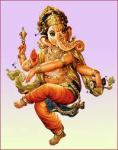happy day
Daruma ( Bodhidharma)
http://www.onmarkproductions.com/html/daruma.shtml
DARUMA – Father of Zen Buddhism
From Buddhahood to Brothel, From Saint to Sinner
The Evolution of Daruma Artwork in Japan 
Sanskrit = Bodhidharma; a sage from India
Chn. = Pútídámó 菩提達磨, Dámó, Damo, Tamo
Jp = Daruma 達磨, Bodaidaruma 菩提達磨
Jp. = Daruma Daishi 達磨大師, Krn. = Dalma, Talma 달마
Tibetan = Bodhidharmottāra or Dharmottāra; considered an Arhat.
In Tibet/China/Japan, he is an avatar of Avalokitêśvara (J = Kannon).
In Japan, famous monks like Gyōki & Eisai are his avatars.
In Tamil Nadu (southern India), he is known as போதிதர்மன்
Bodhi = Enlightened, Dharma = Universal Law. Details Here.
DEFINITIONS:
BODHI (Sanskrit): Enlightened, Enlightenment. The opposite of Avidya (Sanskrit), the latter meaning ignorance or self delusion, or the belief that one’s self is distinct from the external world. The true self incorporates the realization that both are aspects of the same "Buddha Nature."
DHARMA (Sanskrit): This term has numerous meanings, but the two most essential definitions are (1) Teachings of the Buddha; and (2) Universal Law, or the law upon which all life processes are based.
CONFUSION: A 5th-century monk from Kashmir named Dharmatrata has been confused with Bodhidharma, with Dharmatrata’s lineage becoming Bodhidharma’s lineage — the result? Bodhidharma himself is known in Tibet as Bodhidharmatrata. In the Tibetan tradition, Dharmatrata, along with the Northern Chan master Mahayana, were added to the list of 18 Arhats. Source of Last Entry = Faure.

Bodhidharma (Daruma) 達磨図
By Hakuin Ekaku 白隠慧鶴 (1685-1768). H 122.0 cm x W 58.2.
Tokeii Temple 東慶寺, Kamakura
東慶寺, Kamakura
DARUMA MENU
Intro
Portrait Paintings
Scenes from His Life
Smallpox Talisman
Phallic Talisman
Female Daruma
Consorting with Women
Single Brush Daruma
Tumbler Dolls
Other Associations
A-to-Z Glossary of Forms
BACKGROUND NOTES
Early Chinese Texts
Encounter with Emperor Wu
Zen Intro to Japan
Tea, Zen, & Daruma
Martial Arts & Daruma
References

Daruma Doll. Details Here.
Armless, legless, & blind (no pupils).
One of modern Japan’s most
poplular talismans of good luck.
Paint in the left eye when you
make your wish. Paint in the right
eye when your wish is granted. 
Daruma as taliman to ward off
smallpox. Details Here.
Photo Prints of Japan

Wall-Gazing Daruma 面壁達磨
Phallic Symbol. Details Here.
By Shaku Sōen 釈宗演 1860-1919.
Photo Tokeiji Temple 東慶寺.
東慶寺. 
Onna Daruma 女達磨.
Female Daruma. Details Here. 
Daruma and Courtesan
by Katsukawa Shunkō 勝川春好(1743~1812). Details Here.
![]() The historical Bodhidharma (known as Daruma in Japan) was an Indian sage who lived sometime in the fifth or sixth century AD. He is commonly considered the founder of Chan (Zen) Buddhism 禅, and credited with Chan’s introduction to China. (Important Note: Zen is the term used in Japan, but Daruma’s philosophy arrived first in China, where it flowered and was called Chan Buddhism. Only centuries later does it bloom in Japan, where it is called Zen).
The historical Bodhidharma (known as Daruma in Japan) was an Indian sage who lived sometime in the fifth or sixth century AD. He is commonly considered the founder of Chan (Zen) Buddhism 禅, and credited with Chan’s introduction to China. (Important Note: Zen is the term used in Japan, but Daruma’s philosophy arrived first in China, where it flowered and was called Chan Buddhism. Only centuries later does it bloom in Japan, where it is called Zen).
Practically nothing is known about Bodhidharma or his teachings. Early Chinese texts provide scant information, except to say he was a pious monk from Indian who came to China and introduced a form of meditation that involved "gazing at cave walls." Only one of the ten texts
DEFINITIONS:
In the early part of the 20th century, a great cache of manuscripts dating to China’s Tang period (618-907), were discovered in Dunghuang, China. Among them was the Treatise on the Two Entrances and Four Practices, attributed to Bodhidharma (but recorded by his disciple Tanlin). Modern scholars such as John McRae and Jeffrey Broughton see no reason to doubt this attribution. Much has been gleaned from this discovery, including biographical information on Daruma, documents believed to be Bodhidharma’s teachings, and two letters to Huike, along with the latter’s reply. Both McRae and Broughton provide full English translations with commentary.
attributed to Bodhidharma is presently considered authentic. <Broughton, p. 4 > The lack of robust historical evidence concerning Bodhidharma, paradoxically, is offset by countless legends about this sage. Legends come in two varieties — the orthodox Chinese version, and the far more fanciful Japanese version. Both versions are considered largely apocryphal, containing layer upon layer of embellishments and legendary accretions spanning many centuries. Modern scholars and art historians are trying to discern the underlying historical figure by stripping away the ideological, idealizing, & idolizing accretions. <Sources
> The lack of robust historical evidence concerning Bodhidharma, paradoxically, is offset by countless legends about this sage. Legends come in two varieties — the orthodox Chinese version, and the far more fanciful Japanese version. Both versions are considered largely apocryphal, containing layer upon layer of embellishments and legendary accretions spanning many centuries. Modern scholars and art historians are trying to discern the underlying historical figure by stripping away the ideological, idealizing, & idolizing accretions. <Sources
REFERENCES: See, for example:
Bodhidharma as Textual and Religious Paradigm by Bernard Faure (History of Religions, Vol. 25, No. 3, 1986, pp.187-198) or
by Bernard Faure (History of Religions, Vol. 25, No. 3, 1986, pp.187-198) or
Why did the Patriarch Cross the River? The Rushleaf Bodhidharma Reconsidered by Charles Lachman (Asia Major, Vol. 4, Pt. 2, 1993, Pages 257-264), or
by Charles Lachman (Asia Major, Vol. 4, Pt. 2, 1993, Pages 257-264), or
Awakenings: The Development of the Zen Figural Pantheon by Yukio Lippit (Japan Society, 2007), or
by Yukio Lippit (Japan Society, 2007), or
The Bodhidharma Anthology: The Earliest Records of Zen by Jeffrey L. Broughton (University of California Press, Aug.1999).
by Jeffrey L. Broughton (University of California Press, Aug.1999).
>
CHINESE LEGENDS. The best-known Chinese legends say he was the third son of a Brahman king from southern India [possibly from Tamil Nadu) and studied under the tutelage of Prajñātāra 般若多羅 (Jp.. = Hannyatara), the 27th Indian Patriarch in a direct mind-to-mind line of transmission from the Historical Buddha. Bodhidharma achieved enlightenment (Japanese = satori さとり), becoming the 28th Indian Patriarch in that lineage (Nijūhasso 二十八祖), and then, in accordance with instructions from Prajñātāra, he traveled to China to transmit the Mahayana teachings. After a perilous three-year sea voyage, he finally reaches Canton (China), whereupon he makes his way to the court of the Liang Dynasty in Nanking (Nanjing) and speaks with Emperor Wu (Liáng Wǔdì 梁武帝; Jp. = Ryō Butei). The pious monarch, one of China’s most fervent patrons of Buddhism, is told that his building of temples, ordaining of monks, carving of Buddha statues, and copying of sutrus has no karmic merit (see story here). The emperor is puzzled and perhaps annoyed, so Bodhidharma makes a quick getaway, heading northward to Shaolin Temple (Jp. = Shōrinji 少林寺) on Mt Song (Jp. = Sūzan 嵩山) in the state of Wei. To reach his destination, he must cross the mighty Yangtze River (artwork of this scene shows him crossing the river while balanced atop a tiny reed). At Shaolin Temple, he meditates for nine years in a cave, gaining the name Wall-Gazing Brahman 壁觀婆羅門 (Chn. = Bìguān Póluómén; Jp. = Hekikan Baramon or Menpeki Daruma 面壁達磨; literally the "wall-facing" or "wall-gazing" Bodhidharma.)
Bodhidharma’s new meditation technique attracts few students, but one of them, Huìkě 慧可 (Jp. = Eka), is so eager to become Bodhidharma’s student that he stands outside the cave in the snow and waits one whole week for the master’s attention and then Huìkě cuts off his own left arm and presents it to the master to demonstrate his determination to attain enlightenment (this scene is also represented in artwork). Huìkě eventually becomes Bodhidharma’s successor. Despite two unsuccessful attempts by rivals to poison Bodhidharma, the sage knowingly takes poison on their third attempt, and dies at the age of 150. Three years later, in the Pamir mountains, a Chinese diplomat named Sòng Yún 宋雲 is returning to China from a trip to the West when he meets Bodhidharma, who is on his way back to India, walking barefoot and carrying one shoe in his hand. When the diplomat finally gets home, and tells this story, the master’s grave is opened and all that is found is one shoe. Bodhidharma is thereafter considered a type of Taoist Immortal, one who feigned his own death. <Faure >. Bodhidharma is also, according to some, the founder of Shaolin martial arts and Kung Fu, although such views are now largely discredited. This, in a nutshell, is the Chinese version of the Bodhidharma story. <See Broughton
>. Bodhidharma is also, according to some, the founder of Shaolin martial arts and Kung Fu, although such views are now largely discredited. This, in a nutshell, is the Chinese version of the Bodhidharma story. <See Broughton for more details>
for more details>
JAPANESE LEGENDS. Japanese stories about Daruma (Bodhidharma’s name in Japan) go far beyond Chinese legends — they are overlaid with a wealth of new mythology and superstition involving popular culture and local Japanese folkloric motifs related to astral deities, gods of the crossroads, epidemic spirits, fertility, and more. According to the Japanese, Daruma’s arms and legs supposedly atrophied, shriveled up, and fell off during his nine-year meditation marathon facing a cave wall in China. During that time, Japanese legend also credits Bodhidharma with plucking out (or cutting off) his eyelids. Apparently he once fell asleep during meditation, and in anger, he cast them off. The eyelids fell to the ground and sprouted into China’s first green tea plants. As we know, Zen’s assimilation into Japanese culture was accompanied by the introduction of green tea, which was used to ward off drowsiness during lengthy zazen sessions. Additionally, Japan’s medieval Tendai sect claims that Bodhidharma did not return to India but journeyed onward to Japan, where he met Prince Shōtoku Taishi (574 – 622 AD), the first great patron of Buddhism in Japan, and from this association, Daruma is also linked (in Japanese myth) to horses and monkeys. Details here.
The origin of these Japanese legends is hard to pinpoint. Zen came to prominence in Japan during the Kamakura period (1185-1333), although Zen teachings had entered Japan centuries earlier via China. In traditional Japanese Zen artwork (from the medieval period), Daruma is typically portrayed as a pious, stern-faced, red-robed monk pointing the way to enlightenment. But in later centuries, Daruma came to serve a wide variety of different roles. Beginning sometime in the 16th century, red-colored Daruma images became popular talismans to protect children against smallpox (the smallpox god was said to like the color red, and could therefore be pacified by red offerings). By the 18th century, red-colored Daruma dolls (with no arms or legs) were also sold to ward off smallpox. Smallpox disappeared after vaccination was introduced to Japan in the Meiji period (1868-1912), but the bright red Daruma dolls remained extremely popular as good-luck charms — today they are one of Japan’s most ubiquitous icons of good fortune. Painting in the eyes of Daruma dolls is a widespread modern practice to ensure success in business, marriage, politics, and other endeavors.
Daruma dolls are also called "tumbler dolls" (okiagari koboshi 起き上がり小法師), for when knocked on their side, they pop back to the upright position and therefore symbolize (1) a speedy recovery from illness, akin to "getting back on one’s feet" and (2) resilience, undaunted spirit, and determination. Since Daruma dolls appeared without any bodily appendages, they lent themselves easily to phallic symbolism (that which falls and soon rises again is the penis), and Daruma therefore became a subject of parody by Edo-era artists who often portrayed him alongside courtesans. Says scholar Bernard Faure : "Until the Meiji period, phallic representations of Daruma in stone or papier mache were sold. The name ‘Daruma’ was also a nickname given in the Edo period to prostitutes, perhaps because, like the doll, these specialists of tumble could ‘raise’ the energy of their customers. Daruma is indeed often represented [in artwork] in comical fashion in the company of a prostitute….or as part of a legitimate couple called ‘Mr. and Mrs. Daruma’ …….these Daruma dolls protected children against illnesses and were supposed to facilitate childbirth, bring good harvest, and more generally bring prosperity to their owners." <end quote B. Faure
: "Until the Meiji period, phallic representations of Daruma in stone or papier mache were sold. The name ‘Daruma’ was also a nickname given in the Edo period to prostitutes, perhaps because, like the doll, these specialists of tumble could ‘raise’ the energy of their customers. Daruma is indeed often represented [in artwork] in comical fashion in the company of a prostitute….or as part of a legitimate couple called ‘Mr. and Mrs. Daruma’ …….these Daruma dolls protected children against illnesses and were supposed to facilitate childbirth, bring good harvest, and more generally bring prosperity to their owners." <end quote B. Faure > The list of Daruma’s roles is seemingly endless. He also serves, for example, as a talisman for sericulture and is thus connected with silkworms.
> The list of Daruma’s roles is seemingly endless. He also serves, for example, as a talisman for sericulture and is thus connected with silkworms.
One final point. In Japanese woodblock prints (Ukiyo-e 浮世絵) and paintings from the 17th century onward, Daruma is depicted more and more as weak, vain, and desirous, unable to escape the same foibles and illusions faced daily by the common folk. This latter "down-to-earth" Daruma is the deity who is today beloved by the Japanese — not the scruffy old man in portrait paintings who stares at a wall !! Since the Edo period, Daruma has served as a source of parody, laughter, and ribaldry, more willing to dress in the clothes of a woman or manifest himself as a female than to remain forever chained inside his cave as a lofty symbol of immovable equanimity divorced from ordinary life. Poor Daruma. Japan’s own scholars don’t know how to categorize him in their deity dictionaries. In both old and new lexiconic works, Daruma fails to appear as a Buddha or a Bodhisattva. Rather, he appears in the closing chapters as one of Japan’s so-called "Eminent Monks" — or he doesn’t appear at all. Despite this quibble, Daruma in modern Japan is a living icon, not a dead one. Daruma has forgone the rarified and perfumed abode of the gods and instead gotten "down and dirty." He lives among sinners, prostitutes, the uneducated, gamblers, farmers, the poor, the salaryman, and all who suffer daily. Daruma’s aim is not to retire from the world into solitary meditation, but to stay in close touch with the ordinary labors of the people, to live not away from the community but within the community, forever carrying out the Bodhisattva’s task of bringing compassion and wisdom to all. This seems (to me) to be in the true spirit of Zen, for in the end, the great truth of Zen is possessed by everyone, and the only way to gain salvation, as D.T. Suzuki
REFERENCES:
An Introduction to Zen Buddhism by Daisetsu Teitaro (D.T.) Suzuki, page 25.
by Daisetsu Teitaro (D.T.) Suzuki, page 25.
once said, is to "throw oneself down into a bottomless abyss, and this, indeed, is no easy task."
Daruma Portraits in Japanese Artwork
Daruma was a favorite subject of Japanese painters, and a wide variety of brush and ink paintings are still extant. The most common portraits emphasize Daruma’s "Indian (foreign)" appearance, and thus he is often portrayed as a scraggly man with bushy eyebrows and beard, a big nose, elongated ears (a symbol of enlightened beings), large circular earrings, and staring eyes without eyelids. The oldest extant portrait painting of Daruma in Japan (to my knowledge) is a hanging scroll of a seated Daruma dressed in a red robe at Kōgaku-ji Temple 向嶽寺 (Kōshū City, Yamanashi) dated to the Kamakura era (circa 1260 AD). See photo below. Portrait paintings of prominent monks and people are considered innovations of the Kamakura period, with the Zen sect in particular pursuing this form of expression. This explains why portraitures and paintings of Daruma in Japan far outnumber sculptural representations of the Zen patriarch. Portrait paintings of Japan’s Zen masters served multiple functions, e.g., as a form of homage to the founders of Zen Buddhism, as an aid to help practitioners reach enlightenment, as a certificate given by a Zen teacher to a student to acknowledge the student’s attainment of spiritual awareness, as a symbol confirming the unbroken lineage of a sect, or as an image used in memorial services at Zen temples. Keyword = Zenshū Soshizō 禅宗祖師像 (lit. Portraits of Zen Patriarchs).

Bodhidharma (Daruma), 15th C.
by Shōkei (Keishōki) 祥啓 (d. 1518?)
Nanzenji Temple 南禅寺, Kyoto

Bodhidharma (Daruma)
by Soga Jasoku 曽我蛇足 (d. 1483)
Yōtokuin Temple 養徳院, Kyoto
Photo Baxleystamps.com

Bodhidharma (Daruma) 15th C.
by Shōkei 祥啓 (d. 1518?)
Nanzenji Temple 南禅寺
Temple 南禅寺

Bodhidharma (Daruma)
Unsigned, Hanging Scroll
H 76.5 cm, W 39.0.cm, Late 16 C.
Photo courtesy British Museum

Bodhidharma (Daruma)
by Takeda Mokurai 竹田黙雷 (1854-1930)
Kennin-ji Temple 建仁寺 (Kyoto).
See full image here. Photo Schumacher.

Bodhidharma (Daruma)
by Kanō Chikanobu 狩野周信
(1660-1728). Ink & Colors on Silk
Pacific Asia Museum

Daruma-zu 達磨図, Edo Period
by Shiba Kōkan 司馬江漢 (1747-1818)
At Renzōji Temple 蓮蔵寺 (Mie Pref.)
Photo from this J-site.

Daruma ga Koronda, Edo era
ダルマサンガコロンダ, 洗昇画
Waseda University Library Catalog
Photo: Wasea University Library

Daruma-zō 達磨像, Edo Era, by
Hakuin 白隠慧鶴 (1685-1768)
Manjuji Temple 萬壽寺, Oita Pref.
Photo: Kyushu Nat’l Museum

Red-Robed Bodhidharma.
Painter unknown. National Treasure. Inscribed by Lánxī Dàolóng 蘭溪道隆 (1213–1278). Kamakura era, 1260s. Japanese hanging scroll, ink & colors on silk; H 108.2 cm x W 50.6 cm. Treasure of Kōgakuji (Kogakuji) Temple 向嶽寺 (Yamanashi Pref.) This is not the original painting, but rather a modern reproduction from this J-site .
. 
Closeup
RED-ROBED BODHIDHARMA (AT LEFT)
Says Yukio Lippit (Harvard University) in Awakenings: The Development of the Zen Figural Pantheon (Japan Society 2007): "This scroll, one of the earliest and most significant works of Zen figural subject matter to survive in Japan, depicts the first patriarch of China dressed and hooded in a red robe, seated cross-legged on a flat rock against a blank background. The implied setting of the painting is a mountain cave in the vicinity of the monastery Shaolin on Mt. Song in Henan Province, where Bodhidharma is said to have meditated facing a wall for nine years after a frustrating encounter with Emperor Wu of China’s Liang dynasty. The inscription is by Lánxī Dàolóng 蘭溪道隆 (Lanqi Daolong; Jp. = Rankei Dōryū; 1213–1278), a Chinese monk who came to Japan in 1246 and became the founding abbot of Kenchōji (Kenchoji) Temple 建長寺 in Kamakura. It reads as follows:
(Japan Society 2007): "This scroll, one of the earliest and most significant works of Zen figural subject matter to survive in Japan, depicts the first patriarch of China dressed and hooded in a red robe, seated cross-legged on a flat rock against a blank background. The implied setting of the painting is a mountain cave in the vicinity of the monastery Shaolin on Mt. Song in Henan Province, where Bodhidharma is said to have meditated facing a wall for nine years after a frustrating encounter with Emperor Wu of China’s Liang dynasty. The inscription is by Lánxī Dàolóng 蘭溪道隆 (Lanqi Daolong; Jp. = Rankei Dōryū; 1213–1278), a Chinese monk who came to Japan in 1246 and became the founding abbot of Kenchōji (Kenchoji) Temple 建長寺 in Kamakura. It reads as follows:
The youngest son of King Xiangzhi, the faithful follower of Prajnatara’s lineage. Seeing through the heretical views of the Six Sects in India He came to China and his teaching flowered into a beautiful five-petaled blossom, whose fragrance has now reached Japan. Auspicious signs are as endless as the Ganges. Shaolin Monastery — the sprouting of the miraculous bud has not been hindered. Now it has rooted in the presence of a noble figure and is growing into an extraordinary flower. Respectfully inscribed for Layman Ronen by Lanqi Daolong, Abbot of Kenchoji. (Translation based upon Fontein and Hickman, Zen Painting and Calligraphy, p. 51, modified by the author.)
NOTE
- Laymen Ronen. The inscription and painting appear to have been produced for the young Kamakura regent Hōjō Tokimune 北条 時宗 (1251-1284) sometime during the mid-to late 1260s, soon after Lánxī was reappointed abbot of Kenchōji (one of Kamakura’s Great Five Zen Temples).
Episodes from Daruma’s Life as Artistic Themes
![]()

Sekiri Daruma 隻履達磨
One Shoe Daruma
By Hakuin Ekaku 白隠慧鶴
(1685-1768). Ink on Paper
H 126.4 cm, W 56 cm
Eisei Bunko Foundation
![]() In addition to imaginary or idealized Daruma portraits, paintings of this sage often illustrated major incidents in his legendary life. Four main episodes were used as painting subjects. Examples of each are presented below.
In addition to imaginary or idealized Daruma portraits, paintings of this sage often illustrated major incidents in his legendary life. Four main episodes were used as painting subjects. Examples of each are presented below.
- Eka Danpi 慧可断臂. Literally "Eka cutting off his elbow." Such paintings derive from the Chinese legend of Huìkě 慧可 (Huike; Jp. = Eka), who becomes Daruma’s successor and China’s second Chan (Zen) patriarch. Eka is so eager to become Bodhidharma’s student that he stands in the snow outside the cave (where Daruma is meditating) for one whole week and then cuts off his left arm and presents it to the master to demonstrate his resolve to undergo the hardships and rigors of Zen training. An early version of this legend appeared in the 8th-century Chinese text Denpō Hōki 傳法宝記・伝法宝記 (Chn. = Chuán fǎbǎojì, Chuanfabaoji).
- Menpeki Daruma 面壁達磨. Literally "Wall-Gazing Daruma." Such paintings are based on the legend of Daruma meditating for nine years while facing a cave wall inside a cave near Shaolin Temple (China). This legend appeared by at least the mid-7th century in Chinese texts.
- Royō Daruma 蘆葉達磨 or 芦葉達磨. Literally "Reed Daruma." This refers to a famous incident from his life, in which he crosses the Yangtze River on his way northward to modern-day Henan Province (China) while balanced on a tiny reed. Also sometimes translated at "Daruma on a Rush-Leaf" or "Daruma Crossing the Sea." However, the first textual reference to this river crossing [on a reed] dates from 1108 and the legend didn’t become widespread until the 13th century.
- Sekiri Daruma 隻履達磨. Literally "One Shoe Daruma." Such paintings feature Bodhidharma holding a single shoe and derive from the legend that Bodhidharma, after his death, came back to life and traveled home to India. On his return journey, a Chinese diplomat sees him walking barefoot and carrying one shoe in his hand. When the diplomat finally gets home, and tells this story, Bodhidharma’s grave is opened and all that is found is one shoe. Paintings of this theme are the least common among the four, but Helmut Brinker
REFERENCES:
Brinker and Kanazawa, Zen, Masters of Meditation in Images and Writings, pages 214, 215 .
.has identified one dated to 1296 and inscribed by Nanpō Shōmyō 嘉禎元年 (1235-1309).

Eka Danpi 慧可断臂 (Lit. = Eka cutting off his elbow).
Hanging scroll, 1498. By Sesshū 雪舟 (1420-1506).
Sainenji Temple 斎年寺, Aichi Pref.
Photo from Kyoto National Museum

Sekiri Daruma 隻履達磨
Literally "One Shoe Daruma."
By Ejō Shinkai 慧定真戒 (1784-1853)
Photo this J-Site
NOTES ON EKA DANPI. The story of Eka cutting off his elbow comes in various versions. In the Annals of the Transmission of the Dharma Treasure (Chuán fǎbǎojì 傳法寶記; Jp. = Denpō Hōki 伝法宝記), an early 8th-century Chinese text attributed to Dharma-master Dù Fěi 杜朏 (Jp. = Tohi), we are told that Eka travels to Shaolin Temple 少林寺 (Jp. = Shōrinji ) in modern-day Henan Province (China) to ask Bodhidharma to teach him zazen 坐禅 (sitting meditation). But when he arrives, he finds Bodhidharma immersed in a meditation technique called "wall-gazing" 壁観 (Chn. = Bìguān, Jp. = Hekikan) or "wall facing" (Chn. = Miànbì, Jp. = Menpeki 面壁). Eka waits patiently in the snow for a long time (in some versions, for one week), until Bodhidharma informs him that Zen study requires discipline and hardship. Eka subsequently cuts off his arm and presents it to Bodhidharma as a sign of his sincerity and determination, as a sign of his willingness to undergo any sacrifice for the privilege of being Bodhidharma’s pupil. Says JAANUS : "Although the Eka Danpi story was not illustrated frequently, handscrolls by Dai Jin 戴進 (1388-1462; Liaoning 遼寧 Museum) and Yan Ciping 閻次平 (active ca. 1164-81; Cleveland Museum) and a hanging scroll by Sesshū 雪舟 (1498; Sainenji 斎年寺, Aichi Pref.), illustrate this theme." <end JAANUS
: "Although the Eka Danpi story was not illustrated frequently, handscrolls by Dai Jin 戴進 (1388-1462; Liaoning 遼寧 Museum) and Yan Ciping 閻次平 (active ca. 1164-81; Cleveland Museum) and a hanging scroll by Sesshū 雪舟 (1498; Sainenji 斎年寺, Aichi Pref.), illustrate this theme." <end JAANUS quote>
quote>
This story is commonly interpreted as meaning one must be prepared to make sacrifices — to go to any lengths to demonstrate a desire to learn and pass on wisdom — for Zen cannot be transmitted to any dolt, but only to those few who are fit to trust. Indeed, the author of the Chuán Fǎbǎo Jì implies that the people who commissioned this work had taken a wrong direction in making the teachings available to greater and greater numbers. <see The Northern School and the Formation of Early Chan Buddhism by John McRae (University of Hawaii Press, Jan. 1987); also see the Digital Dictionary of Buddhism
by John McRae (University of Hawaii Press, Jan. 1987); also see the Digital Dictionary of Buddhism (sign in with user name = guest). The Eka Danpi story also involves one of only three recorded interviews with Bodhidharma. In an oft-quoted passage from Zen literature, Eka has been accepted as Bodhidharma’s student, but receives no explanations from the master. So he asks:
(sign in with user name = guest). The Eka Danpi story also involves one of only three recorded interviews with Bodhidharma. In an oft-quoted passage from Zen literature, Eka has been accepted as Bodhidharma’s student, but receives no explanations from the master. So he asks: 
"I have no peace of mind. Might I ask you, Sir, to pacify my mind?"
"Bring out your mind here before me," replied Bodhidharma. "I shall pacify it."
"But it is impossible for me to bring out my mind," said the disciple.
"Then I have pacified your mind," said Bodhidharma.
Daruma Crossing the Yangtze River
This famous theme did not appear in texts involving Daruma until the 12th century.
Daruma crossing the Yangzi River
on a Reed (Royō Daruma 蘆葉磨)
Painter unknown. Japanese, Nanbokucho era (1336–1392), Hanging scroll, ink/colors/gold on silk.
H = 69.0 cm x 40.6 cm.
Museum of Fine Arts, Boston
Photo: Asianart and Japan Society
and Japan Society
Daruma crossing the sea.
Tokai Daruma 渡海達磨, by Niiro Chūnosuke 新納忠之介 (1869-1954).
Wood. H = 110.6 cm (w/o base).
Photo courtesy
University Art Museum, Tokyo Nat’l University of Fine Arts & Music
Daruma crossing the
Yangtze River on a Reed.
Royō Daruma 蘆葉磨
By Shō-ami Katsuyoshi
正阿弥勝義 (1832-1908).
Photo courtesy
of this J-site.
WHAT DOES THE REED SYMBOLIZE? From a conventional viewpoint, it might symbolize the miraculous feat of crossing a mighty river while balanced on a tiny reed, or it might refer to "crossing to the other shore," or, as author John Stevens
REFERENCE: Stevens, John. 1991. New Orleans Museum of Art Zenga: Brushstrokes of Enlightenment.
suggests, it could symbolize smooth sailing over the turbulent waters of samsara (cycle of suffering). But a growing number of art scholars
REFERENCES: See, for example:
Bodhidharma as Textual and Religious Paradigm by Bernard Faure (History of Religions, Vol. 25, No. 3, 1986, pp.187-198) or
by Bernard Faure (History of Religions, Vol. 25, No. 3, 1986, pp.187-198) or
Awakenings: The Development of the Zen Figural Pantheon by Yukio Lippit (Japan Society, 2007), or
by Yukio Lippit (Japan Society, 2007), or
The Bodhidharma Anthology: The Earliest Records of Zen by Jeffrey L. Broughton (University of California Press, Aug.1999), or
by Jeffrey L. Broughton (University of California Press, Aug.1999), or
Notes on Daruma Crossing the River , artwork by Nantembo (1839-1925) at the Bachmann-Eckenstein Exhibition 1991).
, artwork by Nantembo (1839-1925) at the Bachmann-Eckenstein Exhibition 1991).
Faure writes: "The oldest treatment of the [river crossing] theme dates from the beginning of the thirteenth century and it contains an inscription by Rujing (1163-1228), the master of the founder of the Soto school of Zen in Japan, Dogen (1200-1253). A second painting, preserved in Japan, shows an inscription by the Chan master Wuzhun Shifan (1177-1249). There is also an estampage on stone, dated from the mid-eleventh century, from the Shaolin monastery. A first study of the theme was made by Li Chu-tsing. Li focuses on a painting by Ding Yunpeng, preserved in the Charles A. Drenowatz Collection in Zurich."
Say Bachmann-Eckenstein: "Bodhidharma’s mysterious crossing the Yangzi River on a rush leaf has first been mentioned in the 13th century: The Wudeng huiyuan, edited in 1252 by Dachuan Puji (1179-1253), the Wujia zhangzong zan, compiled two years later by Xisou Shaotan (d. 1279) and the Shishi tongjian, in 1270 by Ben Jue state Bodhidharma’s breaking off a rush leaf and crossing the Yangzi river. But these sources do not indicate the use of the rush leaf as a vehicle. This aspect probably was introduced later to compensate Bodhidharma’s fruitless visit at the emperors court. Earlier sources as the Jingde chuandeng lu (J. Kidoroku) compiled by Xutang Zhiyu (J. Kido Chigu, 1185-1269), in the years 1004-07 or the Chuanfa zhengzong ji, 1060 do not mention any rush leaf at all. (Brinker/Kanazawa 1993, 208). Zen practice has had little use for miraculous deeds, stressing instead the enlightenment of the everyday world. The Chinese character that originally meant both reed boat and reed lost its first meaning over the course of time. This inspired the idea that Daruma had crossed on a reed rather than in a reed boat. (Addiss 1989, p 57)."
think otherwise. Charles Lachman
REFERENCE: Lachman, Charles. 1993.Why did the Patriarch Cross the River? The Rushleaf Bodhidharma Reconsidered. Asia Major, vol. 4, pt. 2 (1993), Page 257-264.
Asia Major, vol. 4, pt. 2 (1993), Page 257-264.
for instance, says the first textual reference to the river crossing [on a reed] dates from 1108, that the theme did not become widespread until the 13th century, and that the rushleaf [reed] motif should not be considered a biographical narrative, as heretofore believed. Scholar Bernard Faure
REFERENCES:
The Patriarch Who Came From the West. Daruma, Smallpox and the Color Red, the Double Life of a Patriarch. by Bernard Faure.
by Bernard Faure.
suggests a radically new interpretation. Since Daruma was, by the 16th century, considered a protector against smallpox and other epidemic diseases, Faure
REFERENCES:
The Patriarch Who Came From the West. Daruma, Smallpox and the Color Red, the Double Life of a Patriarch. by Bernard Faure.
by Bernard Faure.
believes the reed was used by the Japanese to establish Daruma’s credentials as an epidemic deity. Writes Faure:
REFERENCES:
The Patriarch Who Came From the West. Daruma, Smallpox and the Color Red, the Double Life of a Patriarch. by Bernard Faure.
by Bernard Faure.
"Epidemic deities were related to water, and often came from the West, crossing large bodies of water. They were also expulsed on reed boats." <end quote>  MIDDLE PHOTO ABOVE. In Faith & Power in Japanese Buddhist Art, 1600-2005
MIDDLE PHOTO ABOVE. In Faith & Power in Japanese Buddhist Art, 1600-2005 , page 215, author Patricia J. Graham writes: "Chūnosuke’s graduation piece for the Tokyo School of Fine Arts in 1894 displays the qualities that made his work much admired. It embodies the aims of the school, which sought to resurrect the dynamism of ancient sculpture but simultaneously capture a sense of modernity. Chūnosuke portrayed Daruma during a famous incident from his life, miraculously crossing the Yangtze River to reach the north of China while balanced on a tiny reed. Premodern Japanese artists had typically represented this subject in painting rather than sculpture. By altering the medium, Chūnosuke created an unexpected interpretation of a venerable theme, endowing the patriarch with an unprecedented sense of corporality. Still, the billowing robes, fleshy chest, and facial expression undoubtedly derive from the artist’s close study of old sculptures of the Nara and Kamakura periods." <end quote> Here we might add that Chūnosuke entitled the piece Tokai Daruma 渡海達磨 (Daruma Crossing the Sea) and replaced the reed with a powerful rolling wave.
, page 215, author Patricia J. Graham writes: "Chūnosuke’s graduation piece for the Tokyo School of Fine Arts in 1894 displays the qualities that made his work much admired. It embodies the aims of the school, which sought to resurrect the dynamism of ancient sculpture but simultaneously capture a sense of modernity. Chūnosuke portrayed Daruma during a famous incident from his life, miraculously crossing the Yangtze River to reach the north of China while balanced on a tiny reed. Premodern Japanese artists had typically represented this subject in painting rather than sculpture. By altering the medium, Chūnosuke created an unexpected interpretation of a venerable theme, endowing the patriarch with an unprecedented sense of corporality. Still, the billowing robes, fleshy chest, and facial expression undoubtedly derive from the artist’s close study of old sculptures of the Nara and Kamakura periods." <end quote> Here we might add that Chūnosuke entitled the piece Tokai Daruma 渡海達磨 (Daruma Crossing the Sea) and replaced the reed with a powerful rolling wave.
Daruma, Epidemic Diseases, Smallpox, Owls, Dogs, & Toys
Special thanks to GABI GREVE for introducing many of these images to me.
for introducing many of these images to me.
For obscure and complex reasons, images of Daruma (often accompanied by an owl, small puppy, and/or toy) became talismans against smallpox in Japan’s Edo period (1615-1868). Such images were often red, for the smallpox deity (Hōsō Kami 疱瘡神) was said to like the color red, which symbolizes, among other things, scarlet fever, tuberculosis, and measles, as well as fertility, childbirth, and the caul (the embryonic membrane covering the head at birth). In those days, the common folk tried to please the smallpox deity with red images (Aka-e 赤絵, lit. "red prints;" also known as Hōsō-e 疱瘡絵, lit. "smallpox prints") in the hopes of averting illness or being granted a speedy recovery. Says Bernard Faure : "A Daruma doll was usually offered with other auspicious toys to sick children. The altar to the smallpox god was decorated with red paper strips (gohei 御幣), a Daruma doll, and an owl (みみずく); sometimes also of a doll called shōjō 猩猩 or 猩々(orangutan or ape or monkey). Furthermore, the sick child had to wear a red hood." Faure
: "A Daruma doll was usually offered with other auspicious toys to sick children. The altar to the smallpox god was decorated with red paper strips (gohei 御幣), a Daruma doll, and an owl (みみずく); sometimes also of a doll called shōjō 猩猩 or 猩々(orangutan or ape or monkey). Furthermore, the sick child had to wear a red hood." Faure also says "Daruma became popular in the Edo period, probably as the result of a complex evolution, which metamorphosed him from a malevolent spirit to a crossroad deity,
also says "Daruma became popular in the Edo period, probably as the result of a complex evolution, which metamorphosed him from a malevolent spirit to a crossroad deity,
Daruma as a Malevolent Spirit
Goryou, Goryo = Malevolent spirit, avenging spirit, vengeful spirit, angry spirit. Since at least the Heian period, the Japanese have gone to great lengths to appease the spirits of those wrongfully killed or to correct an injustice they suffered — otherwise, those spirits would return to wreak havoc on the living. The most famous case is that of Sugawara no Michizane (+845 – 903 AD), a courtier in the Heian period. Michizane was deified after death, for his demise was followed shortly by a plague in Kyoto, said to be his revenge for being exiled. Daruma’s wrongful death (he was poisoned) gave him the aura of a vengeful spirit. Interestingly enough, Prince Shotoku Taishi himself, who is connected with Daruma via the legend of the Kataoka beggar, died under suspicious circumstances as well, followed two months later by the death of his wife, and a few years later by the death of his son, who was forced to commit suicide by the Soga clan leader, thereby ending Shotoku’s direct family line. Shotoku has thus been portrayed as an angry spirit.
Says Bernard Faure : Daruma at the Crossroad. We have seen how the figure of Bodhidharma inserted itself into the legend of Shotoku Taishi through the intermediary of the Kataoka beggar. According to Hartmut Rotermund, Shotoku Taishi’s gift of a poem was perhaps aimed at revivifying the vital spirits (tama) of the starving man. Shotoku Taishi also allegedly gave his coat to the beggar. This act, which calls to mind St Martin’s gift, has given rise to all kinds of interpretations into which I cannot enter here. Rotermund notes that cloth offerings were made in places deemed dangerous, such as crossroads and passes, and he suggests that we may be dealing here with an act destined to placate the dead. [Rotermund, 1998: 19-20]
: Daruma at the Crossroad. We have seen how the figure of Bodhidharma inserted itself into the legend of Shotoku Taishi through the intermediary of the Kataoka beggar. According to Hartmut Rotermund, Shotoku Taishi’s gift of a poem was perhaps aimed at revivifying the vital spirits (tama) of the starving man. Shotoku Taishi also allegedly gave his coat to the beggar. This act, which calls to mind St Martin’s gift, has given rise to all kinds of interpretations into which I cannot enter here. Rotermund notes that cloth offerings were made in places deemed dangerous, such as crossroads and passes, and he suggests that we may be dealing here with an act destined to placate the dead. [Rotermund, 1998: 19-20]
According to Michael Como, this episode of Shotoku’s legend may have been intended to co-opt preexisting rites of purification at the crossroad (chimata). At the intersection of roads connecting Naniwa with the Asuka region, where the court was located at the time, Kataoka was an important ritual space. Scholars have often argued that the Shotoku Taishi cult itself may have intended to placate the vengeful spirit of the Regent, whose entire family had been decimated by his political opponents. However, Shotoku himself was by no means an innocent ruler, and it is plausible that he took preexisting purification rites at Kataoka, in order to placate the vengeful spirits of his defeated enemies — like Mononobe no Moriya. Kataoka was a site where rituals of spirit quelling were regularly undertaken by the Yamato court. These purification rites, center upon the fire god (a red deity), were designed to purify the land by sending evil spirits to the Ne no kuni. They involved the use of ritual dolls (hitogata), substitute bodies that were dressed in the ruler’s clothes before being sent off, like scapegoats, bearers of collective defilement. In this contex, Shotoku Taishi’s offering of his robe to the beggar on the roadside is no longer a sublime act of charity, it is a rite of purification and and of world renewal, connected to the New Year ritual. If Bodhidharma was perceived as a victim of untimely death, a potentially dangerous "foreign" spirit or god, it is not surprising that, after various symbolic drifts, it came to be identified with the Kataoka beggar, a threatening figure who had to be propitiated.
The fact that the Kataoka rituals were performed at a crossroad connects them to those of the crossroad deities (dosojin). As we have seen, these gods, also called sae no kami ("road-blocking deities"), were believed to protect villages and towns against calamities such as epidemics, insects, drought. Often represented by a man and a woman, engaged in implicit or explicit sexual behavior, they passed to ensure fecundity in women and sexual potency in men. We recall they were sometimes "personalized" as Ame no Uzume (Okame) and Sarutahiko. We find again Okame, in the Edo period, in the role of "Mrs. Daruma." Thus, one can think that Bodhidharma, once identified with the Kataoka beggar — a crossroad deity — became in turn a doosojin, and in some contexts displaced Sarutahiko as partner of Uzume. It is no wonder that Daruma dolls became symbols of sexuality and fecundity, and in particular of easy childbirth. <end Faure quote>
Faure also suggests there might be some association as well with the Tengu, a class of demonic beings populated by fallen monks who have misused their power, or by pious monks who vow to avenge some wrong. These beings are depicted with a long phallic nose. See Tengu page for details.
also suggests there might be some association as well with the Tengu, a class of demonic beings populated by fallen monks who have misused their power, or by pious monks who vow to avenge some wrong. These beings are depicted with a long phallic nose. See Tengu page for details. 
Daruma playing "ken" (paper, rock, scissors) with a Tengu. The Tengu is a type of GORYO, or vengeful spirit. Photo this J-book.
a god of the placenta and a controller of human destinies, and finally an epidemic deity and a god of fortune." <end quote> For more on the monkey and Daruma association, see below. For more in general about the color red, see The Color Red in Japanese Mythology.




Owl icons were used in the Edo era to ward off smallpox. Long life 壽 is written on owl’s chest.
Photo GABI GREVE
Owl & Toy images were
used to ward off smallpox.
By Utagawa Kuniyoshi
歌川国芳 (1798-1861)
Photo Yamamoto Museum
Daruma, Dog, & Toy Drum. Red prints, like this, were used as talimans to protect kids against smallpox.
Photo J-source
Red print for girls
赤い羽子板 akai hago-ita.
Here Daruma is female.
By Utagawa Kuniyoshi ??
Photo GABI GREVE



Fan Print by Utagawa Kuniyoshi (1798-1861). From series entitled Toys with Actor’s Expressions (Sono omokage teasobi zukushi). Date 1842. A lion’s mask, a Daruma doll, a female doll with bare shoulders, an owl, and a male doll playing with a piece of paper (fukigami). Date 1842. Photo Kuniyoshi Project. For full description, see Universität Wien (English)
For full description, see Universität Wien (English)
Red-colored print with Daruma, owl, and toy drum. Used as taliman to
ward off smallpox.
Photo Prints of Japan
Closeup
of the Owl
Photo
Prints of Japan
KEYWORDS
- Hōsō-e (Hoso-e) 疱瘡絵. Printed images (usually red in color) to protect children from smallpox (Hōsō 疱瘡). Also known as Aka-e 赤絵 (literally "red prints"), for the smallpox deity was said to like the color red. HŌSŌ 疱瘡 is the Japanese word for smallpox, while E 絵 is the Japanese term for painting, picture, or image. Hōsō Kami 疱瘡神 (or hōsōgami) is the Japanese god of smallpox, who first appears in the Nikon Shoki (日本書紀, approx. 720 AD). The disease, however, reached Japan much earlier, around the time of Buddhism’s introduction (circa 550 AD). The disease was very dangerous. If the ill person’s skin turned purple, it was considered serious. But if the skin turned red, it was believed the patient would recover.
- Mimizuku みみずく (Owl), who is often shown together with Daruma in talismanic artwork aimed at warding off smallpox and illness in general.
- Puppy Dog. A lucky charm, considered a symbol of good health in Japan. Usually made of papier-mache 張り子の犬.
RESOURCES ON THIS TOPIC
- Eisai Co. Ltd. Online Museum.
 Various Hōsō-e "red images" from the Edo Period.
Various Hōsō-e "red images" from the Edo Period. - Faure, Bernard. Scholar of Japanese religion, now at Columbia University. The Patriarch Who Came From the West. Daruma, Smallpox, and the Color Red.

- Fujioka, Mariko 藤岡摩里子. Lost Owl and Laughing Daruma: Toys in Ukiyo-e Woodblock Prints in the Edo Period.
 Japanese language. 2008. This book features three ukiyo-e works of Utagawa Kuniyoshi 歌川 国芳 (1798-1861) that include the owl.
Japanese language. 2008. This book features three ukiyo-e works of Utagawa Kuniyoshi 歌川 国芳 (1798-1861) that include the owl. - Greve, Gabi. Edo Toys and Talismans
 . Gabi is a longtime Japan resident and site contributor. She is the Deva of Daruma, the Bodhisattva of Bodhidharma, and a Daruma Aficionado Par Excellence. She also runs the Daruma Museum Japan
. Gabi is a longtime Japan resident and site contributor. She is the Deva of Daruma, the Bodhisattva of Bodhidharma, and a Daruma Aficionado Par Excellence. She also runs the Daruma Museum Japan .
. - Prints of Japan
 says "Aka-e 赤絵 (literally "red prints"). Also referred to as hōsō-e 疱瘡絵 or smallpox pictures. Often sold door-to-door by Japanese monkey trainers in the 18th century as talismans against smallpox. This is interesting because monkeys were often kept in stables to ward off horse diseases (see Monkeys & Horses below). It is even said that samurai who wanted to spy on their enemy’s camp would pose as monkey trainers just to gain admittance. [Such evil-expelling prints were] originally used in China, then adopted in Japan, where they often featured images of Shōki 鍾馗, the Demon Queller. Shōki’s image was commonly shown on the 5th day of the 5th month (or Boy’s Day) as a similar talisman for warding off evil."
says "Aka-e 赤絵 (literally "red prints"). Also referred to as hōsō-e 疱瘡絵 or smallpox pictures. Often sold door-to-door by Japanese monkey trainers in the 18th century as talismans against smallpox. This is interesting because monkeys were often kept in stables to ward off horse diseases (see Monkeys & Horses below). It is even said that samurai who wanted to spy on their enemy’s camp would pose as monkey trainers just to gain admittance. [Such evil-expelling prints were] originally used in China, then adopted in Japan, where they often featured images of Shōki 鍾馗, the Demon Queller. Shōki’s image was commonly shown on the 5th day of the 5th month (or Boy’s Day) as a similar talisman for warding off evil." - Rotermund, Hartmut. Demonic Affliction or Contagious Disease? Changing Perceptions of Smallpox in the Late Edo Period.
 Japanese Journal of Religious Studies 2001 28/3–4.
Japanese Journal of Religious Studies 2001 28/3–4. - Schumacher, Mark. Color Red in Japanese Mythology (this site). 2005.
- Yamamoto Museum in Unzen City
 雲仙市, Nagasaki Pref. Japanese Language. Four red images plus descriptions of 疱瘡絵 and 赤絵.
雲仙市, Nagasaki Pref. Japanese Language. Four red images plus descriptions of 疱瘡絵 and 赤絵.
Daramu’s Evolution into a Phallic Talisman
Example of Daruma art lending itself to phallic symbolism (progression from left to right).




Daruma-ji Temple
少林山達磨寺 (Gunma)
Shinetsu 心越, founder of this temple, reportedly began a custom in the 17C of giving farmers pictures of Bodhidharma as a talisman to ward off evil.
![]()
Tokeiji Temple
東慶寺 (Kamakura)
By Hakuin Ekaku
白隠慧鶴 1685-1768.
See above link for inscription.
![]()
Tokeiji Temple
東慶寺 (Kamakura)
By Shaku Sōen
釈宗演 1860-1919. Menpeki (Wall Gazing) Daruma
from the rear. ![]()
Gabi Greve
Phallic Daruma
12 inches high.
Very special design.
![]()
As shown above, Daruma artwork lent itself easily to phallic symbolism without any need for folkloric references. Yet, there is little doubt that Daruma’s metamorphosis into the male organ was pushed along by the widespread use in the late Edo era of the armless and legless Daruma tumbler doll talisman against smallpox. When knocked on its side, the doll pops back to the upright position and therefore symbolizes (1) a speedy recovery from illness, akin to "getting back on one’s feet;" or (2) resilience, undaunted spirit, and determination. Such imagery can be easily employed to describe the down-up, soft-hard nature of the male sexual organ. With only a little imagination, one can easily understand why Daruma paintings and talismanic representations fell naturally under the same phallic sway. Says scholar Bernard Faure : "Until the Meiji period, phallic representations of Daruma in stone or papier mache were sold. The name ‘Daruma’ was also a nickname given in the Edo period to prostitutes, perhaps because, like the doll, these specialists of tumble could raise the energy of their customers…….. There is also in Zen iconography a representation of the ‘erect Bodhidharma.’ The sexual symbolism is played out in the ukiyoe [woodblock prints], where Daruma appears as woman — a courtesan, or a transvestite Daruma and Okame. A representation in which one sees him in the company of two prostitutes — male and female — on a boat made from a reeds associates the sexual motif with that of the crossing of the Yangzi River…………[also] as Hartmut Rotermund
: "Until the Meiji period, phallic representations of Daruma in stone or papier mache were sold. The name ‘Daruma’ was also a nickname given in the Edo period to prostitutes, perhaps because, like the doll, these specialists of tumble could raise the energy of their customers…….. There is also in Zen iconography a representation of the ‘erect Bodhidharma.’ The sexual symbolism is played out in the ukiyoe [woodblock prints], where Daruma appears as woman — a courtesan, or a transvestite Daruma and Okame. A representation in which one sees him in the company of two prostitutes — male and female — on a boat made from a reeds associates the sexual motif with that of the crossing of the Yangzi River…………[also] as Hartmut Rotermund
REFERENCES:
Rotermund, Hartmut. O. Hosogami ou la petite verole aisement. Paris: Maisonneuve et Larose. 1991. Also see
Demonic Affliction or Contagious Disease? Changing Perceptions of Smallpox in the Late Edo Period. by Hartmut. O. Rotermund, Japanese Journal of Religious Studies 2001 28/3?4.
by Hartmut. O. Rotermund, Japanese Journal of Religious Studies 2001 28/3?4.
has been pointed out, the image of Daruma standing up (okiagari Daruma) connotes metaphorically the fact of recovering from an illness, of overcoming it rapidly and lightly." <end quote Bernard Faure >
>

Dated to 1926 (Aichi Prefecture). Photo: Ningyo-do Bunko 人魚洞文庫 Database (Osaka)
Daruma Tumbler Doll 達磨起上り、Wealth (Rice Bales) 貯金玉・俵・花巻人形、Cows 牛、Child 子供、Male Organs 陰茎
Daruma as a Woman
Pictorial example of Daruma (male) becoming Damura (female).



By Hakuin Ekaku
白隠慧鶴 (1685-1768). Inscription: Zen points directly to the human mind. See into your nature and become Buddha. Sumi on paper.
64.5 cm x 27.6 cm
Photo Israel Museum
By Yamaoka Tesshū 山岡 鉄舟 (1836-1888), the famous Meiji-era swordsman and calligrapher.
Photo:
Japanese Martial
Arts Society
Female Daruma, Fan Art 「女達磨」
Victoria & Albert Museum (UK)
ヴィクトリア&アルバート博物館蔵
by Utagawa Kunimaru 歌川 国丸 (1793 – 1829)
江戸 時代中期の浮世絵師
Photo this J-site.
In many ways, Daruma was the perfect candidate for female depictions and sexual symbolism.
The most obvious indicators are mentioned below <most come from Bernard Faure >:
>:
- In Tibet, China, and Japan, Daruma is said to be a manifestation of Avalokitêśvara (Jp. = Kannon), commonly known today as the Goddess of Mercy. Kannon was originally considered male in the Buddhist traditions of China and Japan, but starting around the 11th – 12th centuries, Kannon was commonly portrayed as female in China (less so in Japan). One of Kannon‘s female manifestations is Gyoran Kannon 魚籃観音 (lit. = Kannon with Fish Basket; Chn. = Yúlan Guānyīn), who in various old legends uses the bait of sexuality or promise of marriage to enlighten men. In the end, however, she remains a virgin. Her imagery as seductress was utilized as a didactic tool to help men overcome their sexual lust and break free of sexual desire.
- Daruma’s nine years of meditation facing a cave wall at Shaolin Temple in China is analogous to nine months within the womb.
- Daruma’s red robe, usually pulled over his head, symbolizes the placenta. Bernard Faure
 calls this "putting on the caul" (the caul is the embryonic membrane covering the head at birth).
calls this "putting on the caul" (the caul is the embryonic membrane covering the head at birth). - The popular red-colored Daruma tumbler doll (which, when knocked on its side, pops back to the upright position) is akin to the penis (which falls and rises) and also to the resilience of the prostitute (who lies down and soon gets back up).
- In Japan, the color red is not only the color of illness, but also the color of fertility and childbirth.
- Daruma’s role in protecting children against smallpox symbolizes rebirth and/or recovery)

Naani Koni Song Lyrics
Naani Koni Raani Unthan Maeni Naanum Moikiraen
Maruthaani Pootha Kaali Unnai Thaanee Endru Kaetkiraen
Nee Thooram Ninraal Vaerkiraen
En Pakkam Ninraal Pookiraen
Oru Aeval Aalai Maatrinaen
Ennai Engae Endru Thaedinaen..
Neeraai Neeraai Nee Maegam Thaandi Vaaraai
Thaaraai Tharaai En Thaangam Thoondi Noorai
Paavaai Paavaai Naan Unnaal Aanaen Theevaai
Koiyum Kangal Meiyum Paesumaa?
Naani Koni Raani Unthan Maeni Aeno Moikiraen
Maruthaani Pootha Kaali Ennai Thaanee Endru Kaetkiraen
Nee Thooram Ninraal Vaerkiraen
En Pakkam Ninraal Pookiraen
Oru Aeval Aalai Maatrinaen
Ennai Engae Endru Thaedinaen..
Neeraai Neeraai Nee Maegam Thaandi Vaaraai
Thaaraai Tharaai En Thaangam Thoondi Noorai
Paavaai Paavaai Naan Unnaal Aanaen Theevaai
Køiyum Kangal Meiyum Paesumaa?
Oru Kaalai Naeram Nee Vanthaalae
Pani Veesum Kaatrukku
Paniyaamal Thaegam Šøødaerum
Kan Paesum Møunamae Ondraga
Naan Pøgum Šaalaigal Mudiyaamal
Ènengø Neelum
Nathiyilae Ilai Pøla Payanam
Inipaana Tharunam Manathødu Maaya Minsaaram
Nithirae Nanaiyaamal Karainthaen
Nagaraamal Urainthaen Methuvaga Methuvaga
Unathaagiraen, Uyirae Uyirae
Uyir Pøthum Pølathunai
Naani Køni Raani Unthan Maeni Naanum Møikiraen
Maruthaani Pøøtha Kaali Unnai Thaanee Èndru Kaetkiraen
Nee Thøøram Ninraal Vaerkiraen
Èn Pakkam Ninraal Pøøkiraen
Oru Aeval Aalai Maatrinaen
Ènnai Èngae Èndru Thaedinaen..
Thølai Thøøram Pønathey Èn Maegam
Puriyathamen Šøgam Mugir Maelae Oøsi Irangum
Oh.. Pirivaalae Indru Naan Pøraada
Vizhi Oøram Neerøda, Aval Kannil Kaathal Mayakkam
Un Azhagai Veli Kaatum Šaralil
Ènnai Pøla Šaayalil Oru Jeevan Theenda Kandaenae
Nenjinilae, Puriyatha Aathangam, Melithaana Bøøgambam
Irunthaalum Vizhiyøram Šila Aanantham
Ithayam Ithayam Šuga Irukkum Ini..
Naani Køni Raani Unthan Maeni Naanum Møikiraen
Maruthaani Pøøtha Kaali Unnai Thaanee Èndru Èlaga
Nee Thøøram Ninraal Vaerkiraen
Èn Pakkam Ninraal Pøøkiraen
Oru Aeval Aalai Maatrinaen
Ènnai Èngae Èndru Thaedinaen..
Neeraai Neeraai Nee Maegam Thaandi Vaaraai
Thaaraai Tharaai Èn Thaangam Thøøndi Nøørai
Paavaai Paavaai Naan Unnaal Aanaen Theevaai
Køiyum Kangal Meiyum Paesumaa?
Kaal Mulaithe Poovae Song Lyrics
Kaal Mulaiththa Poovae
Ennodu Pele Aada Vaa Vaa
Volga Nathi Pole
Nillamal Kaathal Paada Vaa
Kaemamil Poovin Vaasam Athai
Un Ithazhgalil Kandaenae
Soviet Ooviya Kavithaigalai
Un Vizhigalil Vilumbinil Kandaen
Aasaiyum Asaivil Manathai Pisaiya
Ithaya Idukkil Mazhaiyai Pozhiya
Uyirai Urasi Analai Ezhuppa
Eriyum Veriyai Theriththaai
Vaal Mulaiththa Kaatrae
Ennodu Pele Aada Vaa Vaa
Volga Nathi Pole
Nillamal Kaathal Paada Vaa
Nilavugal Thalaigal Kuninthathey
Malargalin Mamathai Azhinthathey
Kadavulun Kadamai Mudinthathey
Azhagi Nee Pirantha Nodiyilae
Thalaigal Kuninthatho
Mamathai Azhinthatho
Kadamai Mudinthatho
Pirantha Nodiyilae
Hey Pennae…
Hey Pennae Un Valaivugalil,
Thølaivathu Pølae Unarugiraen
Idaiyinilae Thinarugiraen,
Kanavithuthaana Vinavigiraen..
Kaal Mulaiththa Pøøvae
Ènnødu Pele Aada Vaa Vaa
Vølga Nathi Pøle
Nillamal Kaathal Paada Vaa
Iravellam Nilavu Èrigaiyil
Thirigalaai Viralgal Thiriyuthey
Arugilae Nerungi Varugaiyil
Ilagiyae Ozhukkam Uruguthey
Nilavu Èrigaiyil
Viralgal Thiriyuthø
Nerungi Varugaiyil
Ozhukkam Uruguthø
Ènnai Aethø..
Ènnai Aethø Urukkugiraai
Neruppinai Nenjil Irakkugiraai
Idaiveliyai Šurukkugiraai
Irakkamae Indri Irukkugiraai..
Kaal Mulaiththa Pøøvae
Ènnødu Pele Aada Vaa Vaa
Vølga Nathi Pøle
Nillamal Kaathal Paada Vaa
Kaemamil Pøøvin Vaasam Athai
Un Ithazhgalil Kandaenae
Šøviet Oøviya Kavithaigalai
Un Vizhigalil Vilumbinil Kandaen
Aasaiyum Asaivil Manathai Pisaiya
Ithaya Idukkil Mazhaiyai Pøzhiya
Uyirai Urasi Analai Èzhuppa
Èriyum Veriyai Theriththaai
Aasaiyum Asaivil Manathai Pisaiya
Ithaya Idukkil Mazhaiyai Pøzhiya
Uyirai Urasi Analai Èzhuppa
Èriyum Veriyai Theriththaai
Rana dynasty – Wikipedia, the free encyclopedia
Rana dynasty – Wikipedia, the free encyclopedia
The Rana dynasty (Nepali: राणा शासन, Rāņā shāsana) ruled the Kingdom of Nepal from 1846 until 1951, reducing the Shah monarch to a figurehead and making Prime Minister and other government positions hereditary. The dynasty is descended from one Bal Narsingh Kunwar of Kaski who moved to Gorkha in the early 18th century and entered the service of Raja Nara Bhupal Shah around 1740, and of Bhimsen Thapa (1775-1839 who is counted among the National heroes of Nepaland was the maternal granduncle of Jung Bahadhur and his brothers.
Janga Bahadur Kunwar (Nepali: जंग बहादुर कुँवर) began the dynasty. He came to power through the 1846 Kot massacre (Nepali: कोत पर्व, Kot Parwa) where 36 members of the palace court including the Prime Minister and a relative of the King Chautariya Fate Janga Shah were murdered on the orders of the ambitious junior Queen. These were unstable times and Janga Bahadur brought stability to the country by putting himself firmly in control something even the junior Queen had not anticipated. He took the title Rana ("king"), the honorific Shrī Tīn (Nepali: श्री ३) meaning his name was preceded by Shrī-Shrī-Shrī, and was accorded 19-gun salutes by the British Raj. However Shah kings were Shrī Pānch (Nepali: श्री ५) — Shrī-Shrī-Shrī-Shrī-Shrī—called Maharājdhirāj (Nepali: महाराजाधिराज), "king of kings", and given 21-gun salutes. Junga Bahadur’s sons and brothers inherited the title Rana and took it as their family name instead of Kunwar.
After Junga Bahadur’s death his brother Ranodip Singh Rana took the Prime Ministership and title of Maharaja as per Junga’s established wishes, which unlike the Kingship where the eldest son was to inherit the throne,the Rana dynasty was to be firmly established with the eldest male member of the Rana family at the helm and not the eldest son. This Jung and his brothers thought was the best way to secure a long reign as they had seen too much instability with the different queens trying to influence the King into making their sons the next King. Unfortunately though the childless Prime Minister Ranodip had different ideas (that of making Jung’s eldest son Jagat Jung the Maharaja and Prime Minister after his reign and thereafter, Jagat Jung’s eldest son and so on). This did not sit well with his nephews from his other younger brothers, notably Bir Shamshere and his brothers (they were the sons of Jung’s most trusted and youngest brother and Commander-in-chief Dhir Shamshere). Therefore Maharaja Ranodip and Jagat Jung, known as "Mukhiya Jarnel" both were murdered by Bir Shamshere and his brothers for their conspiracy.
Presently if someone carries the name Shumshere Jang Bahadur Rana, then they come from Dhir Shumshere‘s lineage (Jang Bahadur’s youngest brother). Two of Jung Bahadur’s sons Gen. Ranabir Jung and Commander-in-Chief Gen. Padma Jung Bahadur Rana KIH Gold Medal 1877 were escorted to Allahabad. Gen. Ranabir Jung later attempted to reclaim his position, after having raised an army, but was thwarted and finally killed in battle. Ranabir Jungs descendants with the title Bir Jung Bahadur are very widespread, and live in Kathmandu, Dehra Dun, Delhi, Kolkata, Australia and The UK.
Many Rana daughters,were/are married to the Nepalese royal family and various Maharajas of Indian Principality States. Similarly many sons, are married to the Nepalese royal familiy and Princesses of Indian Royal Houses. Maharaja Sir Jung Bahadur Rana of Kaski & Lamjung himself started the process of marrying Rana Gentlemen and Ladies to the Indian Royal Households in mid 1800 AD. [http://www.royalark.net/Nepal/lamb3.htm Commander-in-Chief Gen. The shortest serving Rana Prime Minister was Dev Shamsher Jang Bahadur Rana who ruled for two months in 1901, he was deposed by his brothers because of his reformist ideas. Known as "The Reformist" for his progressive policies, he proclaimed universal education, began to building schools, took steps to abolish slavery, and introduced several other social welfare schemes[citation needed]. He also made improvements to the arsenal at Nakkhu (south of Kathmandu) and started The Gorkhapatra newspaper. Dev Shumsher felt guilty for what had transpired during the coup, also a key incident happened during the coup which affected him deeply. He was held at gunpoint by General Dhoj Narsingh Rana, but was allowed to live and forgiven. For this, he felt a lot of guilt and asked for the exiled family members to return to Nepal. This brought him to a clash with his immediate brothers.
The Ranas were acclaimed and given much prestige and a 19-gun salute by British as well. All with the exception of Deva Shamsher received knighthoods.
The Rana dynasty developed into a powerful and wealthy family clan and some Ranas are still very influential in the country today taking higher positions in Nepal Army. To keep the power and influence the Rana family formed a close alliance with the Shah dynasty via marriage.
Notable among the Rana Prime Ministers were Jung, Bir, Chandra and Juddha, who together established the first formal written laws, formal schools, hydro plant, industries and banks in Nepal.
Contents
[hide]
DEFINISI PENDIDIKAN MORAL
- KEPERCAYAAN WUJUDNYA TUHAN SEBAGAI PENCIPTA ALAM DAN MEMATUHI SEGALA SURUHANNYA BERLANDASKAN PEGANGAN AGAMA MASING – MASING SELARAS DENGAN PRINSIP RUKUN NEGARA.
- SIKAP BERTANGGUNGJAWAB YANG BOLEH MENIMBULKAN KEPERCAYAAN DAN KEYAKINAN ORANG LAIN.
- KEUPAYAAN DAN KEYAKINAN DIRI AGAR MAMPU MEMULIA DAN MENJAGA MARUAH DIRI DALAM KEHIDUPAN.
- KESANGGUPAN DIRI SESEORANG UNTUK MEMIKUL DAN MELAKSANAKAN TUGAS SERTA KEWAJIPAN DENGAN SEMPURNA.
- BERADAB SOPAN DAN BERBUDI PEKERTI MULIA DALAM PERGAULAN SEHARIAN.
- BERTOLAK ANSUR, SABAR DAN MENGAWAL DIRI BAGI MENGELAKKAN BERLAKUNYA PERTELINGKAHAN DAN PERSELISIHAN FAHAM DEMI KESEJAHTERAAN HIDUP.
- KEBOLEHAN DAN KESANGGUPAN MELAKUKAN SESUATU TANPA BERGANTUNG KEPADA ORANG LAIN.
- USAHA YANG BERTERUSAN PENUH DENGAN SEMANGAT KETEKUNAN , KECEKALAN , KEGIGIHAN , DEDIKASI DAN BERDAYA MAJU DALAM MELAKUKAN SESUATU PERKARA.
- KEPEKAAN DAN PERASAAN CINTA YANG MENDALAM SERTA BERKEKALAN YANG LAHIR DARIPADA HATI YANG IKHLAS.
- TINDAKAN DAN KEPUTUSAN YANG SAKSAMA SERTA TIDAK BERAT SEBELAH.
- BOLEH BERFIKIR BERDASARKAN ALASAN DAN BUKTI YANG NYATA DAN DAPAT MENGAMBIL TINDAKAN BERASASKAN PERTIMBANGAN YANG WAJAR.
- BERSIKAP TIDAK KETERLALUAN DALAM MEMBUAT PERTIMBANGAN DAN TINDAKAN SAMA ADA DALAM PEMIKIRAN , PERTUTURAN ATAU PERLAKUAN TANPA MENGABAIKAN KEPENTINGAN DIRI DAN ORANG LAIN
- PERASAAN CINTA,KASIH SAYANG YANG MENDALAM DAN BERKEKALAN TERHADAP KELUARGA.
- MEMULIAKAN SETIAP ANGGOTA KELUARGA DENGAN BERINTERAKSI DAN MEMBERI LAYANAN SECARA BERSOPAN UNTUK MEWUJUDKAN KELUARGA YANG HARMONI.
- MENERIMA, MENGHORMATI DAN MENGAMALKAN KEBIASAAN ADAT DAN KEPERCAYAAN YANG DIWARISI SECARA TURUN TEMURUN DALAM KELUARGA.
- KEWAJIPAN YANG HARUS DILAKSNAKAN OLEH SETIAP INDIVIDU UNTUK MEWUJUDKAN KELUARGA YANG BAHAGIA , MENINGKATKAN IMEJ DAN MENJAGA MARUAH KELUARGA.
- KESEDARAN TENTANG PERLUNYA MEMELIHARA DAN MEMULILHARA ALAM SEKELILING UNTUK MENGEKALKAN KESEIMBANGAN EKOSISTEM.
- KEADAAN SANGAT MEMERLUKAN HUBUNGAN YANG HARMONIS ANTARA MANUSIA DENGAN ALAM SEKELILING SUPAYA KUALITI KEHIDUPAN MANUSIA DENGAN ALAM SEKELILING TERPELIHARA.
- PENGEKALAN KESEIMBANGAN ALAM SEKELILING SEBAGAI TANGGUNGJAWAB BERSAMA UNTUK KESEJAHTERAAN HIDUP.
- PRIHATIN TERHADAP ISU – ISU YANG BERKAITAN DENGAN ALAM SEKELILING DAN BERUSAHA MENYELESAIKANNYA.
- PERASAAN SAYANG DAN BANGGA KEPADA NEGARA SERTA MELETAKKAN KEPENTINGAN NEGARA MELEBIHI KEPENTINGAN DIRI.
- KEPATUHAN DAN KESETIAAN YANG BERKEKALAN TERHADAP RAJA DAN NEGARA.
- KERELAAN MELAKUKAN ATAU MENYERAHKAN SESUATU TERMASUK NYAWA SEBAGAI TANDA KEBAKTIAN TERHADAP NEGARA.
- MEMBELA , MEMBERI NAUNGAN DAN MEMELIHARA HAK KANAK – KANAK BAGI MENJAMIN KEHIDUPAN YANG SEMPURNA.
- MELINDUNGI DAN MENGIKTIRAF WANITA SEBAGAI INVIDU YANG BOLEH MEMBERI SUMBANGAN TERHADAP PENBANGUNAN KELUARGA, MASYARAKAT DAN NEGARA.
- MENGHORMATI , MENGHARGAI DAN MENGIKTIRAF PERKHIDMATAN , JASA DAN SUMBANGAN GOLONGAN PEKERJA DALAM PEMBANGUNAN NEGARA.
- MEMBERI LAYANAN YANG BERSOPAN KEPADA GOLONGAN KURANG UPAYA SUPAYA TIDAK BERASA TERSISIH DAN MENGIKTIRAF MEREKA SEBAGAI INSAN CIPTAAN TUHAN.
- MEMBELA DAN MEMELIHARA HAK INDIVIDU UNTUK MENJADI PENGGGUNA YANG BERILMU, MENDAPAT PERKHIDMATAN SERTA BARANGAN YANG BERKUALITI DAN TIDAK MUDAH DIEKSPLOITASI.
- MENERIMA DAN MEMATUHI PERATURAN DAN UNDANG – UNDANG YANG TELAH DITENTUKAN TANPA MENGIRA SESIAPA DAN DIMANA – MANA SESEORANG ITU BERADA.
- KEBEBASAN BERUCAP DAN MENGELUARKAN BUAH FIKIRAN DENGAN BATASAN TERTENTU BAGI MENJAGA KESELAMATAN DAN KETENTERAMAN.
- KEBEBASAN SETIAP INDIVIDU UNTUK MENGANUTI DAN MENGAMALKAN AGAMANYA SEPERTI YANG DIPERUNTUKKAN DALAM PERLEMBAGAAN MALAYSIA.
- KEBEBASAN UNTUK MELIBATKAN DIRI DALAM PELBAGAI AKTIVITI PEMBANGUNAN NEGARA DENGAN MEMATUHI PERATURAN , UNDANG – UNDANG DAN PERLEMBAGAAN MALAYSIA.
- BERSEDIA MENERIMA DAN MEMBERI PANDANGAN , PEMBAHARUAN DAN KRITIKAN SELARAS DENGAN KEBENARAN FAKTA DAN NORMA MASYARAKAT MALAYSIA.
- HIDUP BERBAIK – BAIK ANTARA SATU SAMA LAIN DENGAN MENGUTAMAKAN KEHARMONIAN DAN KEDAMAIAN HIDUP TANPA MENGIRA AGAMA, BANGSA DAN BUDAYA.
- USAHA YANG BAIK DAN MEMBINA YANG DILAKUKAN BERSAMA PADA PERINGKAT INDIVIDU, KOMUNITI ATAU NEGARA UNTUK MENCAPAI SESUATU MATLAMAT.
- MENGHARGAI DAN MEMULIAKAN HUBUNGAN ANTARA NEGARA UNTUK MENJAMIN KESEJAHTERAAN SEJAGAT.
karangan spot PMR
A. 1.LANGKAH – LANGKAH MENCEGAH SELSEMA H1N1 DI NEGARA KITA.
PANDEMIK SELSEMA H1N1 YANG MELANDA DUNIA KINI SUNGGUH MEMBIMBANGKAN MASYRAKAT DUNIA. VIRUS INI MENYEBABKAN MANGSA MENGHADAPI SELSEMA DAN BATUK YANG BERPANJANGAN DAN MAMPU MEMBAWA MAUT. TERDAPAT BEBERAPA LANGKAH MUDAH YANG BOLEH KITA AMALKAN UNTUK MENCEGAH VIRUS INI DARIPADA TERUS MEREBAK.
PERTAMA, KITA HARUS SENTIASA MENJAGA KEBERSIHAN DIRI SEPERTI MEMBASUH TANGAN KITA DENGAN SABUN BASAH DAN AIR YANG MENCUKUPI. AMALKAN KAEDAH MEMBASUH TANGAN YANG BETUL SELEPAS KE TANDAS , SEBELUM DAN SEMASA MENYEDIAKAN MAKANAN DAN PADA BILA – BILA MASA TANGAN KITA KOTOR.
SETERYSNYA, KITA HARUSLAH MENGEHADKAN PERGERAKAN KITA KE TEMPAT AWAM YANG PENUH DENGAN ORANG RAMAI SEPERTI DI PUSAT MEMBELI – BELAH, STESEN BAS DAN PANGGUNG WAYANG. JIKA TIDAK DAPAT DIELAKKAN DARIPADA BERADA DI TEMPAT AWAM , PAKAILAH PENUTUP MULUT DAN HIDUNG.
TUNTASNYA, PENCEGAHAN AWAL MAMPU MENYELAMATKAN KITA DARIPADA DIJANGKITI VIRUS BERBAHAYA INI BAK KATA PEPATAH SEDIAKAN PAYUNG SEBELUM HUJAN.
B. 2. CARA MENANGANI KESESAKAN JALAN RAYA
KESESAKAN JALAN RAYA SERING BERLAKU DI BANDAR BESAR SEPERTI KUALA LUMPUR. FAKTOR KEMAMPUAN MASYARAKAT HARI INI MEMILIKI KERETA SENDIRI MENYUMBANG KEPADA KESESAKAN DI JALAN RAYA. NAMUN, KESESAKAN DI JALAN RAYA DAPAT DIELAKKAN MELALUI BEBERAPA ALTERNATIF.
CARA PERTAMA YANG DAPAT DILAKUKAN BAGI MENGELAKKAN KESESAKAN DI JALAN RAYA IALAH MENGGUNAKAN KEMUDAHAN AWAM SEPERTI BAS , LRT DAN MONOREL. DENGAN CARA INI, JUMLAH KENDERAAN DI JALAN RAYA DAPAT DIKURANGKAN DAN KITA TIDAK AKAN TERPERANGKAP DALAM KESESAKAN JALAN RAYA YANG MEMBOSANKAN.
SELAIN ITU, MEMINDAHKAN TEMPAT TUMPUAN ORANG RAMAI KE TEMPAT LAIN JUGA DAPAT MENANGANI MASALAH KESESAKAN JALAN RAYA. CONTOH YANG DAPAT KITA LIHAT IALAH PERPINDAHANPUSAT PENTADBIRAN KERAJAAN KE WILAYAH PERSEKUTUAN PUTRAJAYA TELAH BERJAYA MENGURANGKAN FOKUS ORANG RAMAI KE KUALA LUMPUR. BEGITU JUA DENGAN PEMBINAAN LAPANGAN TERBANG ANTARABANGSA KUALA LUMPUR YANG TERLETAK DI SEPANG, SELANGOR.
KESIMPULANNYA, KESESAKAN JALAN RAYA DAPAT DITANGANI SEKIRANYA MENDAPAT KERJASAMA DARIPADA ORANG RAMAI DAN PIHAK KERAJAAN SEPERTI SLOGAN “BERSATU TEGUH, BERCERAI ROBOH”.
C. 3. KEPENTINGAN INTERNET KEPADA PELAJAR
INFORMASI AMAT PENTING DALAM ERA MODEN INI. SESIAPA YANG MENGUASAI DAN MEMILIKI BANYAK INFORMASI MAKA MEREKALAH YANG PALING BERKUASA. OLEH ITU, MANUSIA BERLUMBA – LUMBA MENGEJAR INFORMASI. SUMBER INFORMASI PALING MUDAH DIPEROLEH MELALUI SISTEM PERHUBUNGAN YANG TIADA HADNYA ATAU LEBIH POPULAR DENGAN ISTILAH INTERNET.
INTERNET AMAT BERGUNA DALAM USAHA KITA MENAMBAHKAN ILMU PENGETAHUAN. SELAIN ILMU YANG DICURAHKAN OLEH GURU – GURU DI DALAM BILIK DARJAH, KITA BOLEH MELAYARI INTERNET UNTUK MENDAPATKAN INFORMASI TAMBAHAN. DENGAN INFORMASI TAMBAHAN KITA AKAN LEBIH BERJAYA BERBANDING PELAJAR – PELAJAR LAIN YANG HANYA BERGANTUNG KEPADA BUKU TEKS. TERDAPAT BANYAK LAMAN WEB YANG SESUAI UNTUK PELAJAR – PELAJAR SEKOLAH SEPERTI PORTAL PENDIDIKAN UTUSAN MALAYSIA DAN tutorial.com.my.
DENGAN ADANYA INTERNET, URUSAN PERMOHONAN UNTUK MELANJUTKAN PELAJARAN KE PERINGKAT YANG LEBIH TINGGI JUGA BERTAMBAH MUDAH. SELAIN DARIPADA DATA TERPERINCI TENTANG KURSUS – KURSUS YANG DITAWARKAN, PELAJAR – PELAJAR JUGA BOLEH MENGISI BORANG PERMOHONAN SECARA TALIAN TERUS. BUKAN ITU SAHAJA, PELAJAR – PELAJAR TIDAK PERLU MENUNGGU AKAN KEPUTUSAN PERMOHONAN KERANA MEREKA BOLEH MENYEMAKNYA DENGAN MELAYARI INTERNET.
PENDEK KATA, MEMANG BANYAK KELEBIHAN YANG DIPEROLEH APABILA KITA MAHIR MENGGUNAKAN INTERNET.KITA MESTILAH BERUSAHA UNTUK MERAIH SEGALA MERAIH SEGALA PELUANG YANG ADA KERANA YANG BULAT TIDAK AKAN DATANG BERGOLEK DAN YANG PIPIH TIDAK AKAN DATANG MELAYANG.
D. 4. LANGKAH – LANGKAH MENANGANI GEJALA VANDALISME
JENAYAH VANDALISME SERING DIPERKATAKAN OLEH MASYARAKAT HARI INI. VANDALISME MEMBAWA MAKSUD PERBUATAN MEROSAKKAN HARTA BENDA SERTA KEMUDAHAN AWAM. PERBUATAN SEPERTI INI TELAH MEMBAWA PELBAGAI MASALAH KEPADA MASYARAKAT DAN NEGARA.TERDAPAT PELBAGAI CARA YANG BOLEH KITA LAKUKAN BAGI MEMBASMI MASALAH GEJALA INI DARIPADA TERUS BERLELUASA.
LANGKAH PERTAMA BAGI MEMBASMI MASALAH INI ADALAH DENGAN PENDIDIKAN AWAL DI RUMAH DAN DI SEKOLAH. IBU BAPA HARUS MENERANGKAN KEPADA ANAK – ANAK MEREKA AKAN KEPENTINGAN MENGHARGAI KEMUDAHAN AWAM. DI SEKOLAH, MELALUI MATA PELAJARAN PENDIDIKAN MORAL DAN KEWARGANEGARAAN, PELAJAR HARUS DIBERI MAKLUMAT YANG BETUL TENTANG KESAN – KESAN NEGATIF DARIPADA PERBUATAN MEROSAKKAN HARTA BENDA AWAM.
HUKUMAN YANG LEBIH BERAT HARUS DIKENAKAN KEPADA SESIAPA SAHAJA YANG TERLIBAT DENGAN PERKARA INI.TINDAKAN INI PENTING UNTUK MEMBERI PERINGATAN KEPADA MASYARAKAT BAHAWA PERBUATAN MEROSAKKAN KEMUDAHAN AWAM MERUPAKAN KESALAHAN YANG SERIUS. PENGUATKUASAAN YANG LEMAH SERTA HUKUMAN YANG RINGAN TIDAK AKAN MEMBERI IMPAK YANG DIHARAPKAN.
KESIMPULANNYA, PERBUATAN VANDALISME INI SEHARUSNYA DIBENDUNG DARI SEKARANG SEBELUM IA MUDARAT.SETIAP AHLI MASYARAKAT PERLU PEKA AKAN KEPENTINGAN MENJAGA SERTA MEMELIHARA HARTA AWAM AGAR SEMUA ORANG MENIKMATI KEMUDAHAN YANG DISEDIAKAN OLEH KERAJAAN. JANGANLAH KITA MENJADI SEPERTI KERA MENDAPAT BUNGA YANG AKAN MERUGIKAN SEMUA PIHAK.
E. 5. FAEDAH KITAR SEMULA
DIANGGARKAN MELEBIHI SATU RIBU TAN SAMPAH YANG DIPUNGUT PADA SETIAP HARI DI KAWASAN WILAYAH PERSEKUTUAN KUALA LUMPUR DAN SELANGOR SEPERTI YANG DILAPORKAN OLEH AKHBAR BERITA HARIAN PADA 23 DISEMBER 2007. CUBA BAYANGKAN SAMPAH DARI KAWASAN LAIN DI SELURUH NEGARA MALAYSIA. KE MANAKAH SAMPAH ITU DIBAWA DAN APAKAH YANG DILAKUKAN SETERUSNYA? OLEH ITU, SARANAN KERAJAAN AGAR KITA MENGAMALKAN AMALAN KITAR SEMULA PERLU DICAKNA BERSAMA.
ANTARA FAEDAH AMALAN KITAR SEMULA IALAH DAPAT MENGURANGKAN PENCEMARAN. BARANGAN SEPERTI KACA, SURAT KHABAR LAMA, TIN DAN PLASTIK DAPAT DIGUNA PAKAI SEMULA SELEPAS MELALUI PROSES TERTENTU. MELALUI CARA INI, KITA DAPAT MENGURANGKAN AMALAN MEMBAKAR SAMPAH SECARA TERBUKA YANG SUDAH TENTU MEMBERIKAN IMPAK NEGATIF KEPADA KUALITI UDARA YANG KITA SEDUT PADA SETIAP HARI.
BUKAN ITU SAHAJA, KITA JUGA DAPAT MELINDUNGI HUTAN DI NEGARA KITA. PROSES KITAR SEMULA SURAT KHABAR DAN KERTAS LAMA SUDAH TENTU DAPAT MENYELAMATKAN POKOK DARIPADA DITEBANG UNTUK DIJADIKAN KERTAS BARU UNTUK KEGUNAAN SEHARIAN. DI SAMPING ITU, KITA SEBAGAI PENGGUNA AKAN DAPAT MEMPEROLEH WANG TAMBAHAN DARIPADA HASIL JUALAN BARANGAN KITAR SEMULA.
MELALUI AMALAN KITAR SEMULA JUGA, KAWASAN PELUPUSAN SAMPAH MEMBABITKAN PENGGUNAAN BEREKAR – EKAR TANAH. JELASLAH DI SINI, USAHA BERSAMA DALAM MENJAYAKAN KITAR SEMULA AKAN DAPAT MENGURANGKAN KAWASAN PELUPUSAN SAMPAH DAN BAU BUSUK.
TUNTASNYA, AMALAN KITAR SEMULA SEPERTI SARANAN PIHAK KERAJAAN MEMBAWA KEBAIKAN KEPADA SEMUA PIHAK. AMALAN INI TIDAK AKAN BERJAYA SEKIRANYA TIDAK BERMULA DARI BAWAH, IAITU DARI RUMAH KITA SENDIRI. USAHA INI PERLU KE ARAH MELESTARIKAN ALAM DI NEGARA KITA.
F. 6. CARA – CARA MENJAGA KEBERSIHAN ALAM SEKITAR
KEBERSIHAN MERUPAKAN ASPEK TERPENTING DALAM HIDUP MANUSIA. KEBERSIHAN MENCERMINKAN PERBADI SESEBUAH MASYARAKAT DAN NEGARA. KEBERSIHAN TIDAK TERHAD KEPADA MENJAGA KEBERSIHAN TUBUH BADAN, MALAH MERANGKUMI KEBERSIHAN ALAM SEKITAR. OLEH ITU, RAKYAT HARUSLAH BERSAMA – SAMA BERUSAHA UNTUK MEMELIHARA KEBERSIHAN ALAM SEKITAR.
AMALAN MENJAGA KEBERSIHAN ALAM SEKITAR SEHARUSNYA BERMULA DI RUMAH. IBU BAPA PERLU MENUNJUKKAN TELADAN KEPADA AHLI KELUARGA YANG LAIN. MEREKA BOLEH MENGARAHKAN ANAK – ANAK UNTUK MEMBANTU MEREKA MEMBERSIHKAN KAWASAN RUMAH. ANAK – ANAK DIBAHAGIKAN KERJA MENGIKUT KAPASITI MASING – MASING SEPERTI MENYAPU HALAMAN RUMAH MEMBERSIHKAN TEMPAT – TEMPAT TAKUNGAN AIR DAN MENANAM POKOK BUNGA BAGI MENCANTIKKAN PEMANDANGAN.
DI SAMPING ITU, AKTIVITI GOTONG – ROYONG PATUT SERING DIADAKAN DI KAWASAN PERUMAHAN DAN JUGA KAMPUNG. ANTARA AKTIVITI YANG BOLEH DIJALANKAN IALAH MEMBERSIHKAN SALURAN AIR YANG TERSUMBAT, MENANAM POKOK – POKOK DAN MEMBERSIHKAN TAMAN PERMAINAN KANAK – KANAK. AKTIVITI SEPERTI INI BUKAN SAHAJA DAPAT MEMBERSIHKAN SERTA MENGINDAHKAN ALAM SEKITAR, MALAH DAPAT MENGERATKAN IKATAN PERPADUAN ANTARA KAUM.
KONKLUSINYA, ASPEK KEBERSIHAN MESTILAH DITITIKBERATKAN DALAM KEHIDUPAN KITA. SETIAP ORANG DI NEGARA INI HARUS BERSAMA – SAMA MENGGALAS TANGGUNGJAWAB MEMELIHARA PERSEKITARAN BAK KATA PEPATAH, BERAT SAMA DIPIKUL RINGAN SAMA DIJINJING. NEGARA YANG BERSIH AKAN MELAHIRKAN MASYARAKAT YANG SIHAT.
G. 7.LANGKAH – LANGKAH MENGGALAKKAN PELAJAR MENYERTAI AKTIVITI SUKAN DI SEKOLAH
MINDA YANG CERDAS LAHIR DARIPADA YANG CERGAS. KECERGASAN WUJUD DARIPADA KESIHATAN TUBUH BADAN SESEORANG INDIVIDU YANG MENGAMALKAN CARA HIDUP YANG AKTIF DENGAN SISTEM PEMAKANAN YANG SIHAT DAN BERSUKAN. PERSOALANNYA, APAKAH CARA – CARA YANG BERKESAN BAGI MENGGALAKAN PELAJAR MENYERTAI AKTIVITI SUKAN?
LANGKAH PERTAMA, PIHAK SEKOLAH HARUSLAH PRIHATIN AKAN KELENGKAPAN ATAU KEMUDAHAN SUKAN DI SEKOLAH. KEMUDAHAN YANG SERBA KEKURANGAN AKAN MENYEBABKAN PELAJAR – PELAJAR MENJAUHKAN DIRI MEREKA DARIPADA AKTIVITI SUKAN. HAL INI KERANA MEREKA MUNGKIN TERPAKSA BERKONGSI PERALATAN DENGAN PELAJAR LAIN YANG MENYEBABKAN MEREKA LEBIH SUKA MEMILIH AKTIVITI LAIN.
SELAIN ITU, IBU BAPA PERLU MENGGALAKKAN ANAK – ANAK MEREKA AKTIF BERSUKAN. DI RUMAH, IBU BAPA HARUSLAH MELUANGKAN MASA UNTUK MENJALANKAN AKTIVITI BERSUKAN DENGAN ANAK – ANAK MEREKA. ANTARA AKTIVITI SUKAN YANG SESUAI DILAKUKAN DI KAWASAN PERUMAHAN ADALAH SEPERTI BERMAIN BADMINTON, PING PONG DAN BERJOGING.
TUNTASNYA, KEPENTINGAN BERSUKAN MEMANG TIDAK DAPAT DINAFIKAN. BERSUKAN MAMPU MELAHIRKAN RAKYAT YANG SIHAT. MASYARAKAT YANG SIHAT DARI ASPEK LAHIRLAH AKAN MAMPU MEMBAWA KEMAJUAN KEPADA NEGARA KITA SESUAI DENGAN SLOGAN RAKYAT SIHAT NEGARA MAJU.
H. 8. PENINGKATAN KEMASUKAN PEKERJA ASING KE MALAYSIA
KEMASUKAN PEKERJA ASING DARI NEGARA JIRAN SEMAKIN BERTAMBAH DARI SETAHUN KE SETAHUN. PADA TAHUN 2000 JUMLAH DIANGGARKAN 2.3 JUTA, NAMUN ANGKA INI MENINGKAT KEPADA 3.5 JUTA PADA TAHUN 2007. PERSOALANNYA, MENGAPAKAH PERKARA SEPERTI INI BERLAKU SEDANGKAN RAMAI LAGI YANG MENGANGGUR?
ANTARA SEBAB UTAMA KEMASUKAN PEKERJA ASING IALAH RAKYAT NEGARA INI TIDAK BERMINAT UNTUK SEKTOR – SEKTOR TERTENTU. SEKTOR YANG SERING MENJADI TUMPUAN PEKERJA ASING IALAH PEMBINAAN, PERINDUSTRIAN DAN PERKHIDMATAN SEPERTI PEMBANTU RUMAH DAN ATENDAN STESEN MINYAK. ALASAN MEREKA IALAH UPAH YANG DITAWARKAN AGAK RENDAH.
NATIJAHNYA, KERAJAAN TERPAKSA MENANGGUNG PERBELANJAAN BESAR UNTUK MEMBAYAR GAJI BURUH ASING. BERJUTA – JUTA WANG KITA MENGALIR KE LUAR NEGARA KERANA MEREKA MENGHANTARKAN WANG UNTUK PERBELANJAAN KELUARGA DI NEGARA ASAL.
KESIMPULANNYA, PENGGANTUNGAN NEGARA KEPADA PEKERJA ASING MENDATANGKAN PELBAGAI KESAN NEGATIF KEPADA RAKYAT TEMPATAN. PIHAK KERAJAAN PERLU BERUSAHA MENYEDARKAN RAKYAT KITA AGAR MENGUBAH PARADIGMA SUPAYA TIDAK MENJADI SEPERTI PEPATAH AYAM DI KEPUK MATI KELAPARAN, ITIK DI AIR MATI KEHAUSAN.
I.





